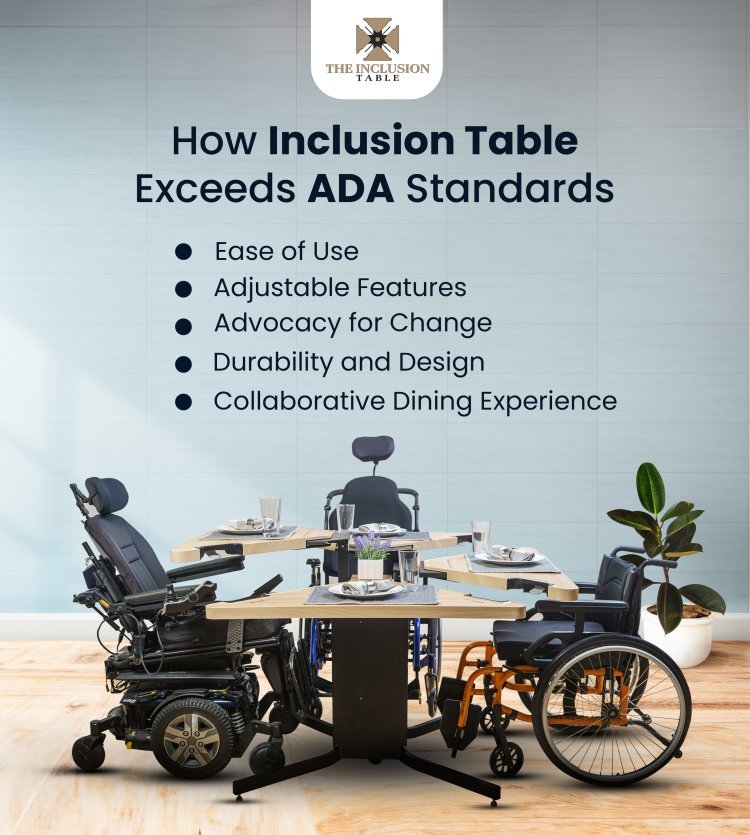Creating an ADA-Compliant Restaurant Dining Experience
Make your restaurant welcoming to all diners. Learn about ADA compliance, best practices for accessibility, and the importance of inclusive design.

While the Americans with Disabilities Act (ADA) sets a baseline for restaurant accessibility; it doesn't guarantee a truly inclusive dining experience. Many restaurants meet the minimum requirements, but there are often overlooked aspects that create barriers for non-ambulatory diners.
Inspired by Inclusion:
Contento, a New York restaurant co-owned by wheelchair users, is a shining example of accessibility done right. Their space is stylish and welcoming, with features that seamlessly integrate functionalities for all diners. This approach emphasizes accessibility not as an obligation, but as the foundation for true hospitality.
Practical Tips for Accessible Restaurants
Space and Layout
- Ample Space: Ensure sufficient space between tables for mobility devices.
- Flexible Seating: Consider movable tables and chairs for adaptability.
- Clear Pathways: Maintain clear access paths, especially when chairs are pulled out.
Self-Service Areas
- Lower Counters: Designate lower counters for easier access.
- Clear Counter Space: Provide clear counter space for wheelchair users.
- Reachable Items: Position condiments and utensils within reach.
Accessible Restrooms
- Spacious Stalls: Ensure ample space for mobility devices.
- Reachable Sinks: Provide sinks accessible from a seated position.
- Additional Accommodations: Consider family restrooms or adult changing tables.
Staff Training
- Awareness and Sensitivity: Train staff to recognize and address diverse needs.
- Proactive Assistance: Encourage staff to offer help and anticipate potential obstacles.
Digital Accessibility
- Inclusive Website Design: Use clear, concise language and avoid jargon.
- Visual and Audio Accessibility: Provide alternative text for images and transcripts for videos.
- Keyboard Navigation: Ensure the website is navigable with a keyboard.
Wheelchair Accessible Dining Tables
- Knee Clearance: Choose tables with adequate knee clearance.
- Adjustable Height: Consider height-adjustable tables.
- Transfer Tables: Provide transfer tables for easier seating and exiting.
By implementing these practical tips, restaurants can create a more inclusive and welcoming environment for all diners.
The Inclusion Table: ADA compliant restaurant tables
While renovations can be costly, there are readily available tools to promote accessibility:
- Tables with Knee Clearance: Look for tables with a height between 28 and 34 inches, allowing for comfortable leg and knee space underneath.
- Movable Tables and Chairs: Opt for furniture that can be easily rearranged to create accessible pathways and seating areas.
- Transfer Benches: Include transfer benches in accessible restrooms to facilitate safe and independent movement for patrons who need assistance.
By implementing these practical tips and utilizing existing accessible furniture options, restaurants can create a welcoming and inclusive dining experience for all.
Remember, accessibility isn't just about compliance; it's about creating a space where everyone feels comfortable and included.
What's Your Reaction?















